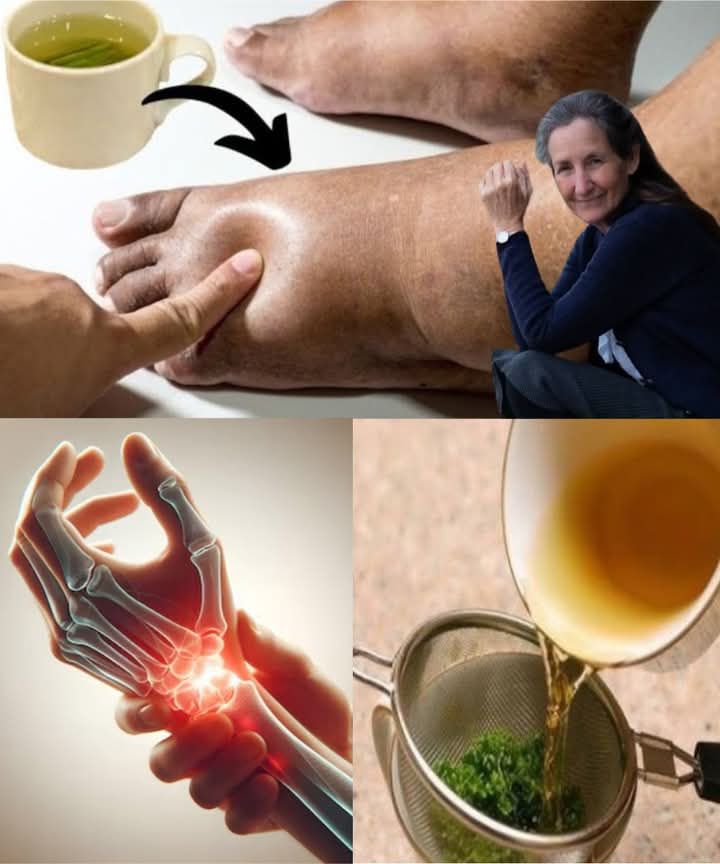Feeling those swollen legs, ankles, and feet? You’re not alone! It’s a common problem with a variety of causes. But before you resign yourself to a life of uncomfortable shoes and elevated evenings, let’s explore some natural solutions that can help you find relief. This article will guide you through some simple, yet effective, ways to bid farewell to that unwanted swelling.
Understanding Swollen Legs, Ankles & Feet: Why Does It Happen?
Swelling, also known as edema, occurs when fluid builds up in your body’s tissues. Several factors can contribute to this, ranging from lifestyle choices to underlying health conditions. Knowing the potential causes is the first step toward finding the right solution.

Common Culprits Behind the Puffiness
- Prolonged Standing or Sitting: Gravity can cause fluid to pool in your lower extremities when you’re stationary for long periods.
- Diet High in Sodium: Sodium retains water, leading to fluid overload and swelling.
- Pregnancy: Hormonal changes and increased pressure on blood vessels can cause swelling, especially in the later stages.
- Certain Medications: Some medications, like those for high blood pressure or pain management, can have swelling as a side effect.
- Underlying Medical Conditions: Kidney disease, heart failure, and liver disease can all contribute to edema. It’s crucial to consult your doctor if you suspect an underlying medical condition.
When to Seek Medical Advice
While many cases of swelling are harmless, it’s essential to know when to seek professional medical attention. See your doctor if:
- The swelling appears suddenly and is accompanied by pain, redness, or warmth.
- You have a history of heart, kidney, or liver disease.
- The swelling is severe or doesn’t improve with home remedies.
- You experience shortness of breath or chest pain.

Natural Remedies for Swollen Legs, Ankles & Feet
Now for the good stuff! Let’s dive into natural strategies you can implement at home to combat swelling and get back on your feet (pun intended!).

Elevate Your Legs
One of the simplest and most effective ways to reduce swelling is to elevate your legs above your heart. This helps gravity work in your favor, encouraging fluid to drain back into your circulation.
- How to do it: Lie down and prop your legs up on pillows. Aim for at least 30 minutes, several times a day.
- Bonus Tip: Do this before bed to help minimize swelling overnight.
Epsom Salt Soaks
Epsom salt (magnesium sulfate) is believed to draw out excess fluid and reduce inflammation. A warm Epsom salt soak can provide soothing relief for swollen feet and ankles.
- How to do it: Add 1-2 cups of Epsom salt to a tub of warm water. Soak your feet and ankles for 15-20 minutes.
- Safety Note: Avoid Epsom salt soaks if you have diabetes or neuropathy, as they can increase the risk of foot problems.
Stay Hydrated
It may seem counterintuitive, but drinking plenty of water can actually help reduce swelling. When you’re dehydrated, your body retains more fluid to compensate.
- Aim for: At least 8 glasses of water per day.
- Bonus: Add slices of cucumber or lemon for extra flavor and diuretic benefits.
Reduce Sodium Intake
As mentioned earlier, sodium causes your body to retain water. Reducing your sodium intake can make a significant difference in reducing swelling.
- Tips for reducing sodium:
- Read food labels carefully and choose low-sodium options.
- Avoid processed foods, which are often high in sodium.
- Use herbs and spices instead of salt to flavor your food.
- Limit your intake of salty snacks like chips and pretzels.
Massage Your Legs and Feet
Massage can help stimulate circulation and encourage fluid drainage. Gentle, upward strokes can move fluid away from your legs and feet.
- How to do it: Use your hands or a massage roller to gently massage your legs and feet. Focus on areas of swelling.
- Bonus: Use a lymphatic drainage massage technique for best results. You can find tutorials online.
Compression Socks
Compression socks provide support and help improve circulation. They gently squeeze your legs, which can help prevent fluid from pooling.
- Choosing the right socks: Talk to your doctor or a healthcare professional to determine the appropriate level of compression for you.
- When to wear them: Wear compression socks during the day, especially when you’ll be standing or sitting for long periods.
Conclusion: Reclaim Your Comfort!
Swollen legs, ankles, and feet don’t have to be a constant source of discomfort. By understanding the potential causes and implementing these natural remedies, you can take control and find lasting relief. Remember to stay hydrated, reduce your sodium intake, elevate your legs, and consider Epsom salt soaks and massage. If your swelling persists or worsens, be sure to consult with your doctor to rule out any underlying medical conditions. Start incorporating these tips into your routine, and you’ll be well on your way to saying goodbye to those puffy limbs and hello to happy, healthy feet!
